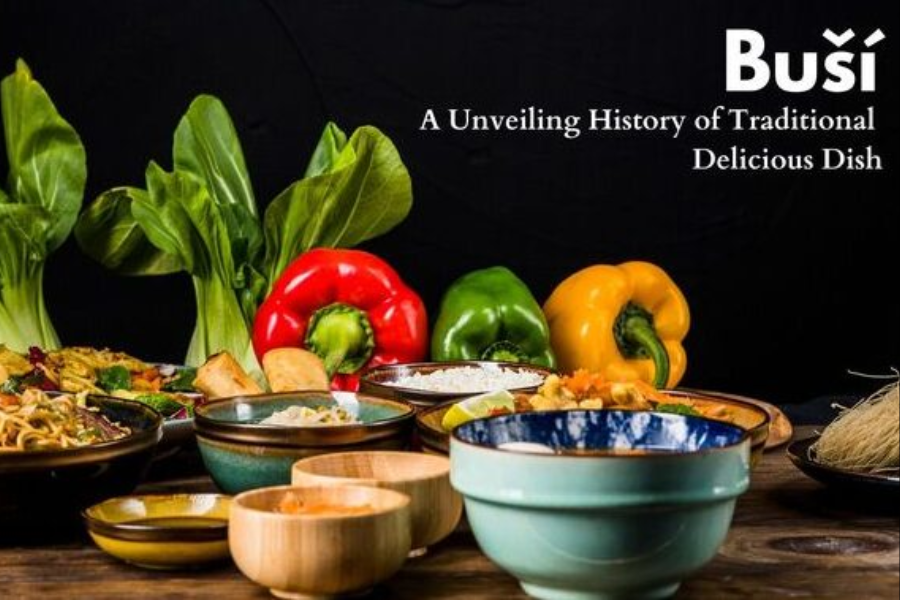Buší is more than just a dish; it’s a culinary symbol with deep cultural roots that stretch across generations. This beloved meal has been cherished for centuries, embodying the rich heritage and flavors of Eastern Europe. In this article, we’ll explore the fascinating history, cultural significance, and modern appeal of Buší, a dish that continues to captivate taste buds worldwide.
The Origins and Cultural Importance of Buší
Buší’s story begins in the rural kitchens of Eastern Europe, where it served as a staple during long winters and harvest celebrations. Made from simple, locally-sourced ingredients, this dish symbolized the resilience and creativity of the people who prepared it. Families passed down recipes through generations, adapting the dish with whatever produce was available, making Buší a representation of seasonal flavors and traditions.
Beyond its role as nourishment, Buší became a cultural icon—a dish that connected families, communities, and celebrations. It reflects the enduring customs of the past, preserving a sense of history with every bite.
The Evolution of Buší in Modern Kitchens
Though its roots are ancient, Buší has evolved over time, incorporating new ingredients and techniques. Today, variations of Buší can be found across Eastern Europe, each reflecting the unique culinary traditions of its region. From rustic country kitchens to trendy city restaurants, the dish has taken on new forms while staying true to its comforting, hearty essence.
Some chefs blend Buší with global influences, creating fusion dishes that offer a fresh twist on this classic meal. Meanwhile, in rural areas, the dish is still prepared with farm-fresh ingredients, maintaining the authentic flavors that have long defined it.
A Global Icon and Culinary Tourism Favorite
Buší’s rich history and delicious taste have attracted a global following. Its simplicity, adaptability, and unique flavor profile have made it a favorite among food enthusiasts around the world. As its reputation grows, so does the interest in visiting its place of origin, making Eastern Europe a hotspot for culinary tourism. Travelers flock to experience the authentic taste of Buší and immerse themselves in the region’s rich food culture.
The Plant Behind the Dish: The Buší Herb
At the heart of Buší’s flavor is the Buší plant, scientifically known as Busius maximum. This herb, native to tropical South America, made its way into Eastern European kitchens through centuries of cultural exchange. With its fragrant leaves and medicinal properties, the Buší plant adds both flavor and health benefits to the dishes in which it is used.
Beyond its culinary use, the Buší plant has been revered for its healing qualities, with ancient civilizations utilizing it for a variety of ailments. Today, it remains an essential part of natural medicine, known for its anti-inflammatory and immune-boosting properties.
Health Benefits and Environmental Impact of Buší
In addition to its delicious taste, Buší is celebrated for its numerous health benefits. Packed with antioxidants, vitamins, and essential minerals, it’s known to improve digestion, enhance energy levels, and strengthen the immune system. Its natural healing properties make it a popular choice for those seeking holistic remedies.
Furthermore, the cultivation of Buší is environmentally friendly. As a renewable resource, the plant helps promote sustainable practices, reducing reliance on synthetic materials and lowering carbon emissions. Its cultivation encourages eco-conscious living, making it a symbol of both health and environmental stewardship.
Versatility in Everyday Life
Buší isn’t just confined to the kitchen—it can also be used in skincare and wellness products. With its natural moisturizing and anti-aging properties, Buší extract is often found in face masks and moisturizers. Its versatility makes it a valuable ingredient in both food and beauty routines.
Looking to the Future: Sustainability and Innovation
As people worldwide become more environmentally conscious, Buší is seen as a beacon of hope for a sustainable future. New innovations in farming and processing techniques are making the plant more accessible and efficient to grow. From eco-friendly packaging to textiles made from Buší fibers, the plant’s potential is continuously expanding.
With advancements in vertical farming and biotechnology, the future of Buší looks brighter than ever, promising innovative solutions to today’s environmental challenges.
Conclusion: A Dish with Deep Roots and Boundless Potential
Buší represents more than just a culinary tradition; it embodies the intersection of history, culture, and sustainability. From its humble beginnings in Eastern European kitchens to its modern-day appeal as a global culinary icon, Buší continues to inspire. Whether you’re savoring a comforting bowl of Buší or using its extract in a beauty product, this plant holds the power to nourish both body and soul while promoting a more sustainable future.
So why wait? Dive into the world of Buší today, and discover how this age-old tradition can enrich your life and the planet.
FAQs
Is Buší easy to find outside of Eastern Europe?
Yes, Buší has gained international popularity and can be found in specialty food stores and online shops around the world.
Can I grow the Buší plant at home?
Absolutely! The Buší plant thrives in warm, humid climates and requires plenty of sunlight and regular watering. With the right conditions, it’s easy to cultivate.
What are some popular dishes made with Buší?
Buší is used in a variety of dishes, including soups, stews, salads, and even desserts. Buší soup, Buší salad, and pastries featuring Buší are among the most popular.
Are there any side effects of consuming Buší?
Generally, Buší is safe to eat. However, as with any food or plant, it’s a good idea to consult with a healthcare professional before incorporating it into your diet, especially if you have any underlying health conditions.
Is Buší cultivation environmentally friendly?
Yes, the cultivation of Buší is sustainable and environmentally friendly. It’s a renewable resource with a low carbon footprint, making it an eco-conscious choice.

Leave a Reply